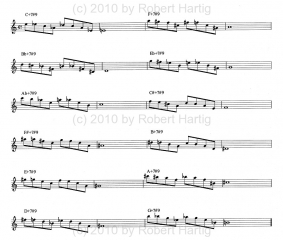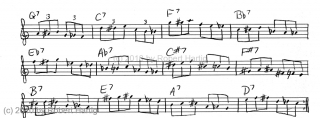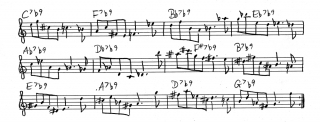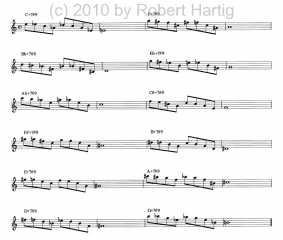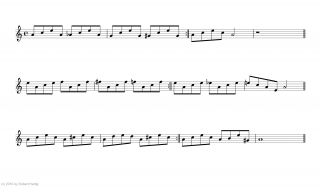As I begin this post, the first major tornado-producing storm system of 2010 is moving to the east after taking 10 lives in the South yesterday. Already a tornado-breeder, the system matured yesterday into a wide-scale outbreak driven by hefty bulk shear, massive low-level helicities in the order of 600 and above, and CAPE values up to 2,500. Yazoo City, MS, was hit hard by a powerful, rain-wrapped wedge. The verdict remains open as to whether this was a single, long-lived tornado that traveled as much as 200 miles, or one in a series, which seems likelier.
Sorry, I can’t offer a write-up on yesterday’s storms. I was home sleeping, and I have no regrets that I missed anything. With the models suggesting rain-wrapped, low-visibility tornadoes rocketing along at 50 mph or more; with the potential for hydroplaning while driving at gonzo speeds in order to keep on top of fast-moving, rapidly morphing storms and avoid having them get on top of us; and with the logistical madness of three sleep-deprived chasers–Bill Oosterbaan, Mike Kovalchick, and me–having to backtrack afterward to Saint Louis where my car was parked and then drive 450 miles back to Grand Rapids, the negatives of chasing this big, messy, and dangerous tornado outbreak seemed to easily outweigh the potential payoffs.
So Bill, who was determined to catch the action, made arrangements to hook up with Kurt Hulst and Bill’s brother, Tom Oosterbaan, in Illinois, and then he dropped Mike and me off at my car. The two of us headed home, and I can tell you, it felt mighty good to crawl under the covers upon my return and sleep until 1:00 in the afternoon. After talking with Tom yesterday evening, I’m glad I chose as I did.
I may have more thoughts to share about yesterday’s scenario, but I’ll save them for another post. The previous two days in Texas and Kansas deserve some attention in their own right, and not just as the prequel to the big, day 3
outbreak. They may have been a bust for me tornado-wise, but they were nevertheless the first decent system of the year and my first chase out on the Plains. It was a blessing to get out on the road once again and see the vast, textured expanses of the Texas and Oklahoma panhandles.Naturally, the landscape included the TIV2, which at this point should be designated a mobile national monument of the Great Plains. Back in 2008 we had bumped into its predecessor in Nebraska; this Thursday, we pulled into a gas station in Pampa, gassed and Rain-Xed up, then drove around to the other side of the station, and surprise! There it was–the Tank and its entourage. Cool! Who can resist taking a few photos? Not me.
As for chasing storms, Thursday was a should’a. We should’a either listened to Mike and headed for western Kansas, where most of the tornadoes occurred later in the day, or else gone with Bill’s and my initial impulse to chase the bigger CAPE, albeit forecasted low helicities, near Childress, Texas. For that matter, if we had endured the initial grunge in Wheeler, or better yet, just parked along US 60 east of Pampa–in other words, if we had just sat and waited–we’d have been golden. Instead, we sacrificed an opportune position and went after some cells that fired to our northwest along the dryline. Doing so made a certain amount of sense, as those storms were already looking supercellular and were moving toward the warm front and better helicities, while the cells popping up to our south in advance of the dryline seemed to just sit there and languish. So after the northern storms we went.
Bad decision. One of the southern cells developed steam shortly after we made our move. We could still have turned around at that point, but we chose to commit to our decision and wound up betwixt and between the vortex breeding grounds to our south and north. As a result, we found ourselves looking forlornly at the radar as the southern cell shaped up beautifully and began churning out tornadoes, while our storms struggled valiantly but
never quite got their act together. If there’s a lesson to be learned, it’s that good things come to those who wait. And, I might add, that model SRH is nice if you can get it to cooperate, but it can be deceptive. Helicity is prone to change with the storm environment in ways that forecast models don’t anticipate. If CAPE and 0-6 km shear are sufficient, storms may just generate their own low-level helicity.Anyway, we chased the dryline storms and busted. Our storms tried hard to tornado, but they just couldn’t quite manage to produce. So instead of the blue ribbon, we wound up with honorable mention: some decent structure, including cool-looking wall clouds, a few funnels, and–as tail-end Charlie went high-precip in the Oklahoma panhandle–a nice, banded-looking storm with a formidable shelf cloud.
As for Friday, we picked exactly the right target up in northeast Kansas along US 75 just south of the Nebraska border. We were smack in the axis of a nice moisture plume. But nothing happened. As the afternoon progressed, the cumulus field we were sitting under began to generate towering cumuli, but these turkey towered and busted against a mid-level cap that just wouldn’t erode. So that was that. Looks like a lot of other chasers got disappointed as well by the northern play. It happens. We finally cut our losses around 7 p.m. and headed back east toward Saint Louis and a band of storms that was moving toward I-70. Ironically, one of these produced a series of tornadoes. If Thursday had been a should’a, Friday was an if-only. If only we’d targeted northeast Missouri…but there had been no reason to do so that we could see.
Now another storm system looks to be moving into the Midwest later this coming week. The action could be closer to home, but I’ll think about that in a day or two. Right now, it’s time to make this post, rest up, and get on with the rest of life.
